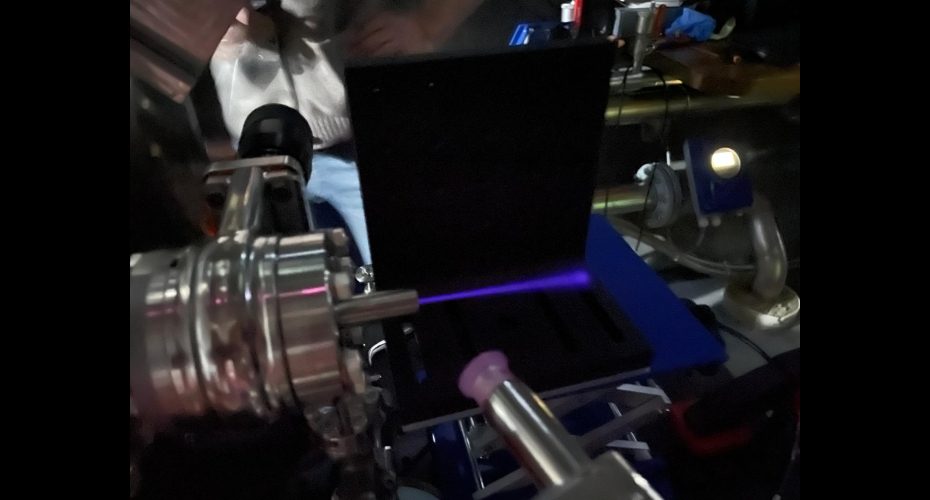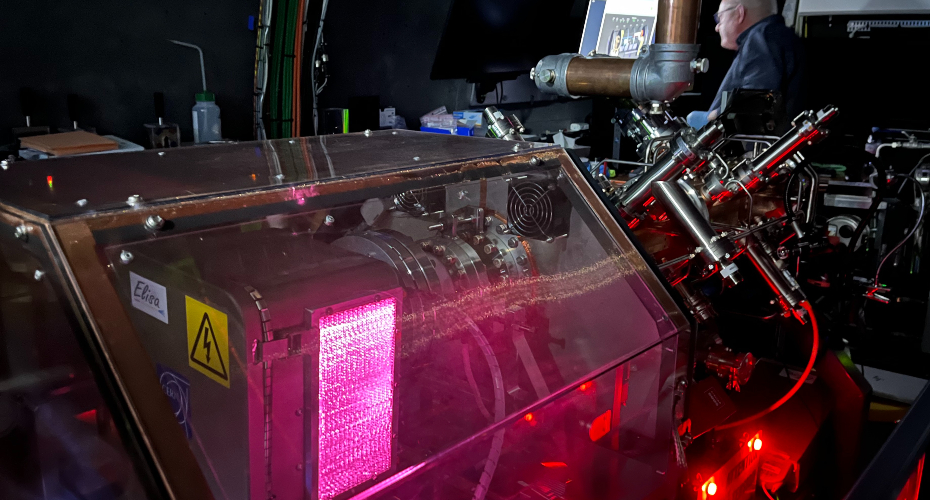The development of the world's first portable particle accelerator designed to be taken to remote parts of the globe to study rock art and other cultural heritage is underway thanks to a new interdisciplinary research project.
NoMAD - Non-destructive Mobile Analysis and imaging Device - is seeking to create a mini version of the Large Hadron Collider, capable of scanning rocks to reveal invisible works of art that might have faded over time.
Funded by UKRI, NoMAD is being co-led by archaeologists at the University of Exeter and the Ashmolean Museum in Oxford, with physicists at the University of Liverpool and ANSTO (Australian Nuclear Science Technology Organization).
It formally began work in November with three days of testing at the world-famous CERN laboratory in Geneva.
"NoMAD focuses on painted rock art, which is a crucial part of our shared cultural heritage," says project co-lead Professor Jamie Hampson, a renowned expert in the field based in the Humanities, Arts and Social Sciences Department of the University of Exeter, Cornwall. "The earliest rock art was made thousands of years before the advent of writing, and it is found on almost every continent, making it one of the most universal forms of human expression.
"But like other archaeological records, rock art is subject to physical degradation, and over the course of centuries, pigments fade and disappear through natural weathering and the accumulation of dirt. We hope to bring faded rock art back to life, and also determine which mineral elements are present in specific motifs at specific sites."
Currently, scientists employ Proton Induced X-ray Emission (PIXE) analysis to study portable artefacts, a technology that uses accelerated protons to identify chemical elements non-destructively. This was most famously demonstrated when scientists discovered a hidden portrait beneath the paintwork of Vincent Van Gogh's Patch of Grass.
When it comes to in situ analysis, however, archaeologists are left with two options: either to use the less powerful technique of Portable X-ray Fluorescence on site, or to remove samples of the rock art and take them away for analysis at an accelerator.
This type of destructive analysis is often not permitted or feasible - so what NoMAD is striving to achieve is to design a compact, portable particle accelerator using recent advancements in high-frequency Radio Frequency technology. This would allow PIXE analysis to be performed at archaeological sites and museums around the world.

"For a PIXE portable accelerator to become a reality, the physicists in the team will need to reduce its footprint, and improve its robustness, reliability and efficiency," says Dr Tessa Charles from ANSTO. "So, the plan is to test and hone the device iteratively, optimising both the beam dynamics and Radio Frequency performance."
During the three days at CERN, the research team had the chance to experiment with the proton accelerator ELISA (Experimental Linac for Surface Analysis), which is being used for archaeological research at the Science Gateway, CERN's education and outreach centre. Using paint samples created to mimic those found in rock art, and under the auspices of CERN physicist Dr Serge Mathot, the team assessed the damage to each sample inflicted by the proton beam, and what conditions were ideal for each material to avoid damage.
Throughout the project, the archaeology team will provide both insight into the complexities of taking this technology into the field, and data on pigment elements and thicknesses. They will create two databases: one of potential rock art testing sites with relevant information, such as location, environmental setting, content and ownership; and a second with published chemical analyses from rock art sites.
While the research team believe a fully functioning portable accelerator is several years away, the development of prototypes through this project will be a key stepping-stone. And they believe the technology could benefit other disciplines, such as environmental researchers using it to identify contaminated soils or airborne pollutants.
"Combining expertise in physics, engineering, and archaeology, NoMAD will design new accelerator technology to help archaeologists study and preserve fragile, unique cultural heritage, which is vital to many Indigenous communities across the globe," adds Professor Hampson. "A compact accelerator of this sort will be a world-first, making this project revolutionary in the fields of accelerators and cultural heritage management."
NoMAD is funded by a £225,000 grant from the Biotechnology and Biological Sciences Research Council, designed to bring together STEM and humanities disciplines. Under the terms of the grant, Professor Hampson is classed as the 'Problem Owner', and co-lead Dr Tessa Charles as the 'Solution Holder'. They are being supported by physicists at the University of Liverpool, Dr Adelphine Bonneau of Sherbrooke University, and Dr Courtney Nimura, an archaeologist at the Ashmolean Museum, Oxford, and a post-doctoral researcher at HASS Cornwall.







